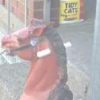1151 search results - page 36 / 231 » Tracking Appearances with Occlusions |
ICCV
2007
IEEE
14 years 11 months ago
2007
IEEE
While great strides have been made in detecting and localizing specific objects in natural images, the bottom-up segmentation of unknown, generic objects remains a difficult chall...
BMVC
2000
13 years 10 months ago
2000
Tracking interacting human body parts from a single two-dimensional view is difficult due to occlusion, ambiguity and spatio-temporal discontinuities. We present a Bayesian networ...
BMVC
2010
13 years 7 months ago
2010
Three methods are explored which help indicate whether feature points are potentially visible or occluded in the matching phase of the keyframe-based real-time visual SLAM system....
MMSP
2008
IEEE
14 years 3 months ago
2008
IEEE
— Active appearance model (AAM) has been widely used in face tracking and recognition. However, accuracy and efficiency are always two main challenges with the AAM search. The pa...
AMFG
2003
IEEE
14 years 2 months ago
2003
IEEE
This article presents a system that can recover and track the 3D speech movements of a speaker’s face for each image of a monocular sequence. A speaker-specific face model is u...

